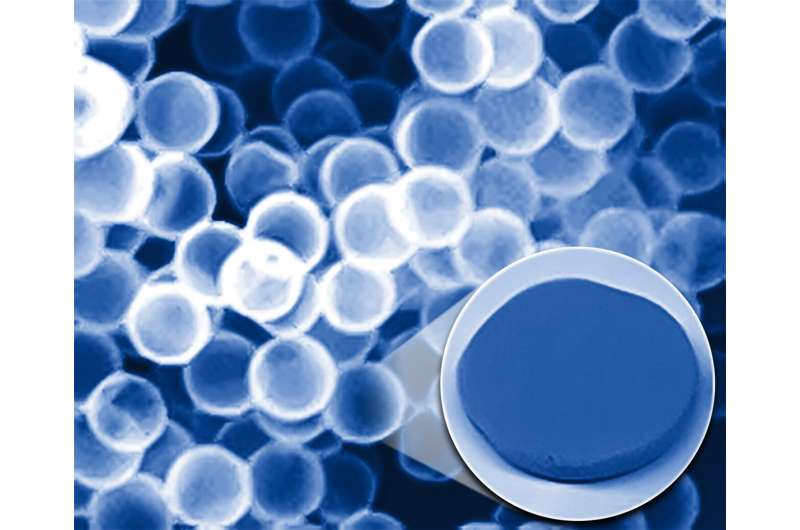ORNL researchers made a thermal insulation composite from hollow silica particles by mixing the particles with cellulose fibers. The composite proved to be highly moisture stable and shows potential for use in thermal applications. Credit: ORNL, U.S. Dept. of Energy
Oak Ridge National Laboratory researchers demonstrated a process for producing a moisture-stable, lightweight thermal insulation material using hollow silica particles, or HSPs. Their study was published inRSC Advances.
Thermal materials insulate refrigerators, building envelopes, energy storage systems, fuel cells, heat exchangers and combined heat and power systems. Commonly made from glass fiber, mineral wool or polystyrene, these materials also require thick layers that take up significant space within building equipment and envelopes, which in turn lowers energy efficiency.
HSPs provide an alternative, but their nano-micrometer size and powder-based structure also make them more susceptible to moisture, difficult to transport and messy to use.
In a study, researchers made a thermal insulation composite by mixing cellulose fibers and HSPs in water, then pouring the mixture in molds and removing the water through a freeze-drying technique.
"We demonstrated that our composite is highly stable to moisture," ORNL's Diana Hun said. "This addresses the long-standing issue of using HSPs as thermal materials."
More information: Jaswinder Sharma et al, A lightweight thermally insulating and moisture-stable composite made of hollow silica particles, RSC Advances (2022). DOI: 10.1039/D2RA01561G
Journal information: RSC Advances
Provided by Oak Ridge National Laboratory
























